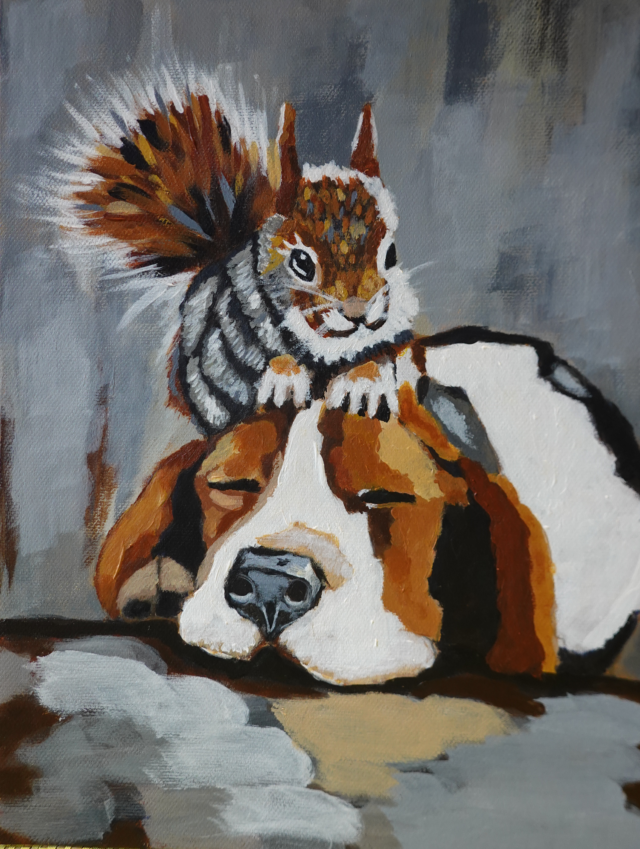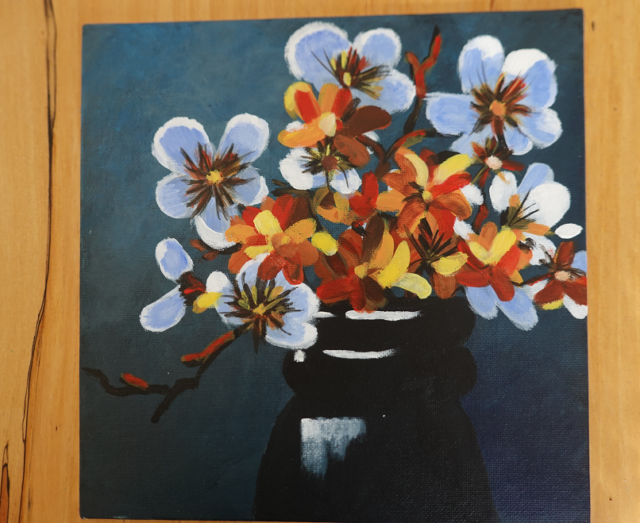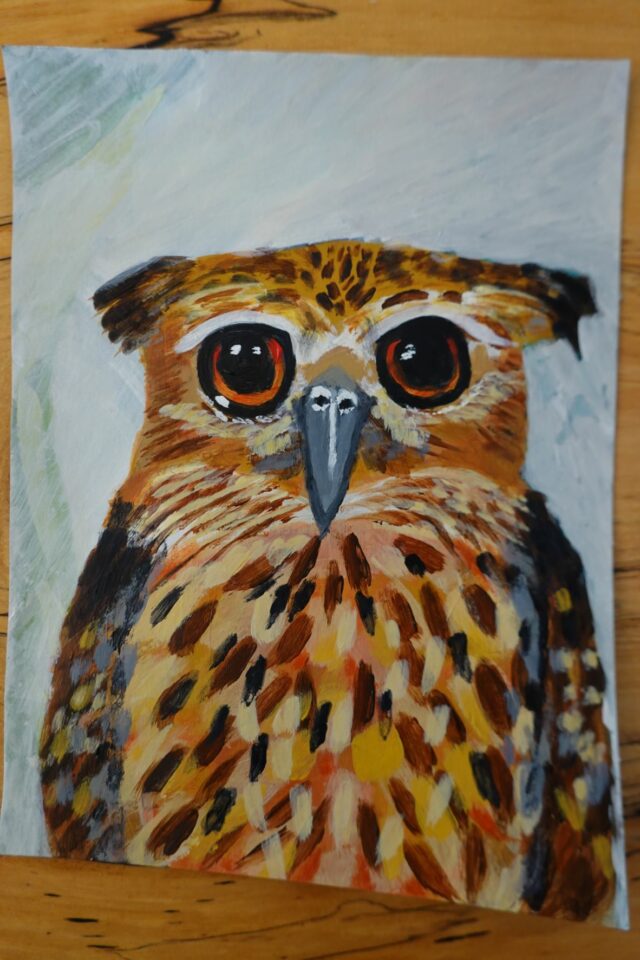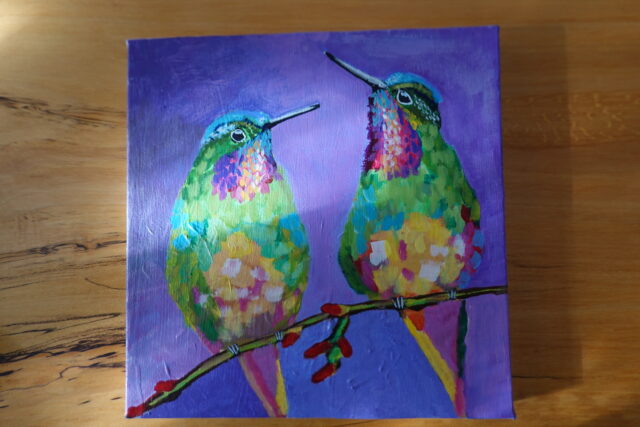I’d like to give credit to the original artists.







While it may seem vain to post all these paintings, it really just helps me become better at this skill. I do have a few original pieces but they are not ready for showing quite yet. Happy painting.
I’d like to give credit to the original artists.







While it may seem vain to post all these paintings, it really just helps me become better at this skill. I do have a few original pieces but they are not ready for showing quite yet. Happy painting.
I haven’t been to the Art Gallery of Ontario for quite a while. It was a valuable return as I thoroughly enjoyed the exhibition Cassatt-McNicoll: Impressionists Between Worlds.

https://ago.ca/exhibitions/cassatt-mcnicoll-impressionists-between-worlds
I have seen Mary Cassatt’s work somewhere before – I can’t recall where. However, Helen McNicoll’s work is new to me. She was a Canadian artist, though she mostly lived in the UK. Like Cassatt (who was American but also primarily lived in Europe), she painted women’s lives.
The exhibition cleverly highlights the similarities and differences between their approaches. Both were very advanced, well trained, skilled, and relatively successful, Cassatt probably more so, or at least she was more well known in her time and after. Both came from well off backgrounds that allowed them the freedom to travel, learn, and paint professionally.
Doors were often closed to these women; however, they opened their own by developing unique styles. Cassatt is known for her mother and child portraits. So is McNicoll, apparently. My favourite of hers in this genre is the one where the mother (or caregiver) has her hand on the baby carriage but does not turn her gaze toward the child as she is reading!

McNicoll painted a series portraying women on a chintz sofa in her studio, some of contemporary women (early 1900s) in modern dress. Two were of women in heavily Victorian garb. I am absolutely fascinated by these pictures. In reading the exhibit book I have learned that McNicoll seemed to be making a point about the outdated crinoline style in comparison with the sleeker contemporary style, in particular by those in favour of women’s suffrage. While the expectation at the time was generally still that women were to be limited to the domestic sphere, McNicoll highlighted the sofa as not only a part of her domicile, but of her work. That’s not to say she was a suffragette, apparently.


One very interesting feature of the exhibit was a soundless video of two deaf artists discussing Helen McNicoll’s work. She was deaf from the age of two. It’s nice to see the institution diversifying its perspectives.
Sadly, McNicoll died at a very young age from diabetes. I’m happy to have discovered her. As a person learning how to paint, I am totally enthralled by her technique. As a history teacher, I am interested in discovering more about her in the context of her times.
My mom and I went to see the new exhibit at the McMichael Gallery in Kleinburg. Actually, it’s called the McMichael Canadian Art Collection, to be proper.
I know I have been there before but I only have a vague memory of the building. The building does not disappoint. In fact, my mom remembers going there with her parents when it was still the McMichaels’ home and they would sit and greet guests.
All photos are mine.

The way the collection is set up is very smart. All the exhibits and galleries lead into each other. So it’s not really practical just to see one exhibit. Since the building is not gigantic, like the Met Museum in New York, for example, the whole thing that can be seen easily. We enjoyed a small exhibit by Sandra Meigs, Sublime Rage, featuring very large paintings, almost like they were done on window blinds.
I am not qualified to speak on how diversified their collection is now. It is clear that they have made an attempt to feature many women artists and some Indigenous artists beyond their Norval Morrisseau collection and their Inuit sculpture and print collections.
The main reason we went was to see the North Star exhibit. I happen to have watched the curatorial video on You Tube. As a new painter, I am quite interested in the Group of Seven and Tom Thomson. I often flip through the pages of my book on their paintings before I go to sleep (I am NOT saying they make me fall asleep!).
The show did not disappoint. It is so intriguing to see Thomson’s brushstrokes in his many small sketches. He was not a professionally trained painter – though he was friends with some very well trained and educated painters such as AY Jackson, JEH McDonald, and Lawren Harris. Considering he mostly learned (apparently) through talking with these fellow painters and experimentation and how he painted for such a short period, his work is incredible. Never mind that, his sense of colour and freedom of the brush are incredible. It is actually quite a pedagogical experience to be able to see the brushstrokes up close.
The exhibit highlights some of the few sketches he turned into canvases for future exhibits and sales. Here’s one example of the transition, one I really find exquisite because of the detail of the shadows. The exhibit book (which I bought, of course) explains that the influence for this type of shadow work was AY Jackson. The sketch is the bottom photo.
As I said, as a new painter I am trying to learn certain basic techniques pertaining to sky, clouds, water, flowers, and trees. Tom Thomson is a tree master!
I have only just started to read the book accompanying the exhibit. One that stood out already is an interesting piece on how Thomson has often been “Indigenized” in much of the writing about him – really mythologizing about him. At the same time, as has often happened in Canadian history, the actual Indigenous people have been written out of the story. I look forward to more insight on not only his painting but his place in Canadian history.
I wonder if I will be able to apply any of my learning in my art?
I don’t claim to be artistic, but I certainly love painting. It’s one of those pandemic hobbies that stuck around. I feel very grateful to have some time off to enjoy it.

Flowers are hard to paint, I find. But they are common subjects. I’m really proud of this one. Of course I don’t design my own. I follow along with the Art Sherpa on YouTube. After I tried this one I tried a version on my own, making my own colour choices. It didn’t turn out to be something I’d want to post. Live and learn.

I love to repurpose old art. This was a piece of black media paper that had a bunch of colours on it just randomly scratched on. I turned it into grumpy owl, also following along with the Art Sherpa on YouTube. Val made fun of me for playing along with the background. It was originally yellow, green, white and blue. I just slapped on some white (as you can see by how uncarefully it was done) to make it less distracting. There was an annoying yellow arrow sticking out of the owl’s head. He didn’t deserve that.

I re-did the background on these hummingbirds numerous times and still don’t love it. The Art Sherpa’s was a lovely blueish grey. Mine was always on the purple side. But eventually I had to stop tinkering. This was also an old canvas that I gessoed and turned into a new one. I try not to notice how unsharp the beaks are and how the eye is in the wrong place for the birdie on the left. Oh well.